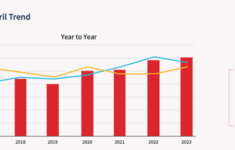Applying a new group rating methodology to its assessment, Standard & Poor’s lowered the counterparty credit rating for Warren Buffett’s Berkshire Hathaway Inc. by one notch—to “AA” from “AA+”—on Thursday, while leaving the “AA+” financial strength ratings of the insurance units untouched.
But even the ratings of the insurance companies were assigned a negative outlook by the New York-based rating agency, which pointed to the possibility that capital adequacy could deteriorate if investment risk were to increase materially or if the insurance companies needed to fund a large acquisition.
The negative outlook also reflects a sovereign rating cap of AA+/negative for U.S. financial services firms.
As for the lower credit rating on the holding company, S&P explained that it reflects the company’s dependence on its core insurance operations for most of its dividend income.
In the research update explaining the rating rationale, S&P said that close to 80 percent of the insurance group’s dividend capacity is from insurers domiciled in one state, making the dividends subject to statutory limits on dividend payouts allowed without special approval from the Nebraska insurance commissioner.
New Methodology Applied
Under the new rating methodology for insurers published by S&P on May 7, analysts start the rating process by deriving a Business Risk Profile for the carrier—a combination of an overall industry and country risk assessment together with an evaluation of the insurer’s competitive position.
BRP scores ranging from “excellent” to “highly vulnerable” essentially assess the risks inherent in an insurer’s operations—for example, capturing the risks typically faced by insurers operating in a certain country and industry segment arising from the economic, regulatory, political environment, as well as the inherent volatility of the products it writes.
For Berkshire, S&P says the BRP is “excellent”—the highest level.
S&P notes in Thursday’s report that the competitive position component of the BRP—which reflects assessments of operating earnings, brand differentiation, market share, distribution, and geographic differentiation—was scored “extremely strong,” which is also the highest possible level.
The analysts also develop a Financial Risk Profile for the carrier—combining their assessments of capital and earnings, material risks not captured in the assessment of capital and earnings (known as “risk position”), and financial flexibility.
The FRP, with scores ranging from “extremely strong” to “extremely weak,” bring the financial consequences of management decisions into the rating.
According to the Berkshire report, S&P scores Berkshire’s FRP as “very strong”—the second highest level.
Together, the BRP/FRP combination would imply an “anchor rating” of “aa,” according to a description of the new rating method. But judgment factors, holistic modifications, assessments of management and governance and the sovereign rating cap all apply to modify the anchor to get to a final rating.
In Berkshire’s case, the report describes the following judgments:
- A high tolerance for equity investments fueling volatility in the company’s insurance subsidiaries’ statutory capital.
- Adequate enterprise risk and management.
- Management succession concerns.
- A one-notch uplift to the BRP to reflect the low-risk nature of Berkshire’s non-insurance operations, which contributed 60-70 percent of total earnings.
- A holistic adjustment applied because Berkshire, on a consolidated basis, continues to outperform its insurance and non-insurance peers with respect to operating and financial performance (underwriting and cash-flow generation).
S&P noted that in spite the downgrade, Berkshire “continues to benefit from nonstandard notching and is the only interactively rated insurer that has an issuer credit rating less than two notches below the core insurance company ratings.”
“This reflects our view of the diversity of businesses and the substantial amount of cash and investments at the holding company,” S&P said.
More Berkshire-Related Actions
Meanwhile, over at A.M. Best, which affirmed the “A++” financial strength rating and “aaa” issuer credit ratings of Berkshire Hathaway’s National Indemnity Co. and its affiliates on Wednesday, the Oldwick-based insurance rating agency affirmed the “A++” ratings of The Medical Protective Company on Thursday, noting the support of MedPro from Berkshire, its ultimate parent.
A.M. Best also upgraded Princeton Insurance Company, another malpractice writer which was acquired by MedPro at the end of 2011.
“The ratings…acknowledge Princeton’s relationship with Med Pro, from which Princeton receives operational support for its actuarial, underwriting, claim and investment functions. In addition, financial support is derived from significant reinsurance transactions between Princeton and Med Pro. This support demonstrates the effective commitment provided by Berkshire for its affiliated companies and the financial flexibility afforded to Princeton by being part of this well renowned organization,” A.M. Best said in a statement about the upgrade.
In the announcement about National Indemnity’s ratings released a day earlier, A.M. Best was generally positive about the operating performance, capitalization and global market profile of the company, but noted that a lack of transparency with about the successor to CEO Buffett pose a risk to the organization “and is a continuing concern for A.M. Best.”





















 Climate, Geopolitical Conflict and Cyber Risks Top Concerns in Latest AXA Survey
Climate, Geopolitical Conflict and Cyber Risks Top Concerns in Latest AXA Survey  The Evolving GenAI Journey: Three Ways the Technology Is Impacting P/C Insurance
The Evolving GenAI Journey: Three Ways the Technology Is Impacting P/C Insurance  ‘Make America Healthy Again’: RFK Jr. Wins Over Fans by Stoking Food Toxin Fear
‘Make America Healthy Again’: RFK Jr. Wins Over Fans by Stoking Food Toxin Fear  Safeco to Take Personal Lines Renewal Business of Main Street America
Safeco to Take Personal Lines Renewal Business of Main Street America 




